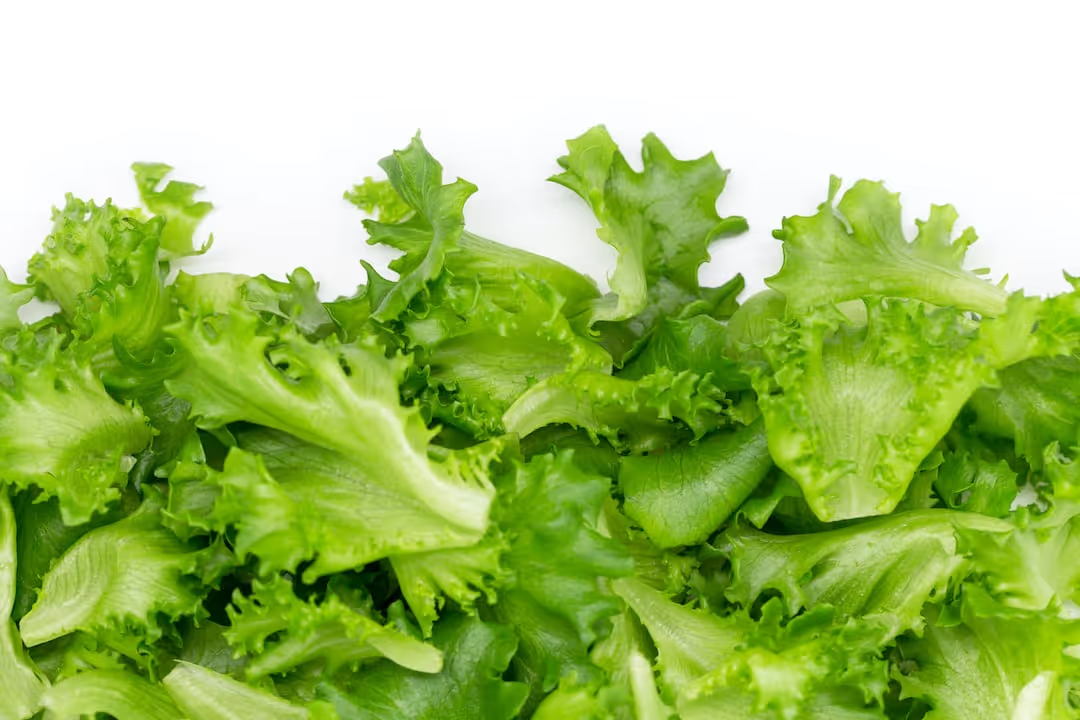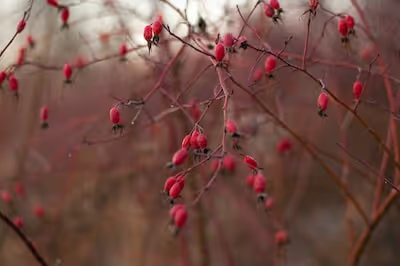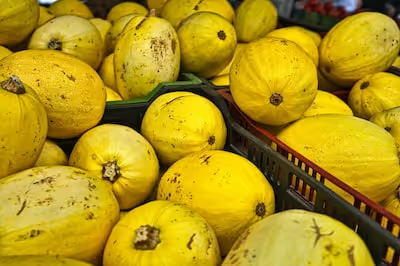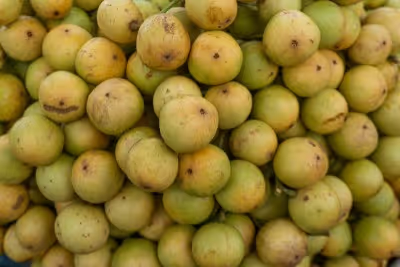Growing Lettuce Indoors: Fresh Greens From Your Own Kitchen

Growing Lettuce
Growing lettuce at home delivers fresh greens straight to your salad bowl, saves cash, and couldn't be simpler. With minimal space, basic containers, and regular watering, growing lettuce thrives in sunlit balconies and cozy windowsills alike. Stick around as we unpack quick, practical steps to transform your space into a leafy, edible haven.
Cheatsheet: Indoor Lettuce Success—Fast, Fresh, Nutritious
🌱 Lettuce Facts
- Harvest in 25–40 days
- 97% water—hydrate with every bite
- One handful: 5–10 calories, high vitamin K, folate
- Grow indoors any season—crisp year-round greens
🧰 Tools and products you'll need
- Shallow trays or pots (4–6 in / 10–15 cm deep)
- Organic potting mix
- Lettuce seeds (looseleaf, butterhead = best)
- Spray bottle or watering can
- Grow light (LED full-spectrum) if lacking sunlight
- Small fan for airflow, if needed
🌞 Location & Light
- Place at south-facing window or under grow light
- Needs 14–16 hrs light daily
- 65–70°F / 18–21°C best for rapid, sweet growth
🌾 Planting Steps
- Fill container with moist potting mix, 1 in / 2.5 cm from top
- Scatter seeds thinly (1/2 in / 1 cm apart), cover lightly
- Mist well with water to settle seeds
- Cover with plastic wrap or humidity dome until sprouted
- Remove cover after sprouting (2–4 days), move to light
- Thin to 2 in / 5 cm apart for big leaves, closer for baby greens
💧 Water & Feeding
- Keep soil evenly moist, never soggy
- Bottom-water to avoid fungus
- Weekly: feed half-strength liquid fertilizer
✂️ Harvest & Regrow
- Cut outer leaves at 3–4 in / 7–10 cm tall
- Leave center to regrow: multiple harvests per planting
- Refresh soil after 2–4 harvests for best results
🥗 Eat for Health & Independence
- Daily fresh greens—no store runs
- Boosts vitamin A, K, folate intake
- Grows in small spaces—apartment, kitchen counter
-
Why Growing Lettuce Indoors Works
Growing Lettuce thrives inside because it loves cool temps, shallow containers, quick cycles, and modest light compared to fruiting crops. I cut salads while the coffee brews, and the plants keep giving like a polite houseguest.
University sources consistently list lettuce as a cool-season crop with optimal growth around 60 to 65 F, 16 to 18 C, which is living-room territory for most homes. UC ANR and University of Minnesota Extension echo that sweet spot.
Light, PPFD, and DLI, explained simply
PPFD is the brightness plants feel, measured in micromoles per square meter per second, and DLI is the total light they get in a day. For lettuce indoors, aim for 200 to 300 µmol m-2 s-1 at the canopy for 14 to 16 hours to hit a DLI near 12 to 17 mol m-2 d-1.
DLI math is simple: PPFD x hours x 3600 divided by 1,000,000. Example, 220 µmol for 16 hours equals about 12.7 DLI.
- LEDs 4000 to 5000 K give clean color rendering and tight internodes, set 8 to 12 inches, 20 to 30 cm, above the leaves.
- Use a timer for 14 to 16 hours on, darkness helps the plant reset and limits algae in hydro setups.
- If leaves pale or crisp at the edges, raise lights or reduce hours by 1 to 2, then reassess in three days.
Cornell Controlled Environment Agriculture notes lettuce performs well at a DLI of roughly 12 to 17 mol m-2 d-1, which aligns with compact, energy-sensible home lighting.
Temperature, humidity, and airflow
Hold 60 to 68 F, 15 to 20 C, and lettuce purrs, keep nights a touch cooler if you can. Humidity around 40 to 60 percent limits tipburn and fungal sulking, and a small fan moving air across the canopy prevents damping-off.
UC and USDA guides point out that lettuce seeds can stall above 77 F, 25 C, so germinate cooler for fast, even sprouting.
Containers and media that behave
- Shallow trays 10 by 20 inches, 25 by 51 cm, with a 1.5 to 2 inch, 4 to 5 cm, profile are perfect for baby leaf.
- Use a peat-free soilless mix with coco and perlite, light, sterile, and drains well.
- For heads, 4 to 6 inch, 10 to 15 cm, pots or net cups spaced 6 to 8 inches, 15 to 20 cm, apart prevent cramped hearts.
- Hydro options: simple Kratky jars, raft/DWC tubs, or a tight little NFT channel, all excel with lettuce.
Varieties that shine indoors
- Butterhead: ‘Buttercrunch’, ‘Tom Thumb’, plush texture, tolerant of lower light.
- Mini romaine: ‘Little Gem’, ‘Green Forest Mini’, sweet ribs and crisp hearts.
- Looseleaf and oakleaf: ‘Salad Bowl’, ‘Red Oakleaf’, fast baby leaf in 25 to 30 days.
- Batavia: ‘Muir’, handles warmth better, sturdy leaf margins under LEDs.
- Fun pick: ‘Outredgeous’ red romaine, the same type NASA grew on the ISS in 2015.
‘Little Gem’ never let me down under modest lights, tight heads and a clean crunch. ‘Buttercrunch’ forgives missed waterings and tastes like sweet rain on a hot skillet.
Soilless vs hydro vs Kratky, quick compare
- Soilless mix: lowest fuss, bottom-water, feed weekly, harvest baby leaf in 28 to 35 days.
- DWC or raft: steady growth, EC stays stable, fuller heads in 35 to 45 days with good light.
- Kratky: zero pumps, set-and-forget jars, great for 1 to 3 heads on a windowsill.
Step by step, seed to sandwich
- Sanitize trays and tools with a 3 percent hydrogen peroxide wipe, keep damping-off at bay.
- Fill trays with moistened mix, pH balanced water helps, then level without compacting.
- Sow 2 to 3 grams seed per 10 by 20 tray for baby leaf, or 1 to 2 seeds per cell for heads at 1/8 inch, 3 mm, depth.
- Mist to settle, cover lightly, then keep 65 to 70 F, 18 to 21 C, for germination.
- Remove humidity dome at first sign of green, then move under lights immediately.
- Thin to one plant per cell for heads, scissors save roots and your nerves.
- Begin feeding after cotyledons expand, start at 75 ppm N in mix, half-strength hydro nutrients for water culture.
- Maintain lights at a fixed height, move up as leaves approach within 6 inches, 15 cm.
- Harvest baby leaf at 3 to 5 inches, 8 to 13 cm, or let heads size up with steady water and cool air.
- Reseed weekly for an uninterrupted bowl, I keep three trays on rotation like a sourdough schedule.
Nutrition, pH, and EC without the headache
In soilless mix, a mild, nitrate-forward feed works best, look for something near a 3-1-2 or 4-1-3 ratio with calcium and magnesium. Keep pH near 6.0 to 6.5 in media, that keeps iron and calcium available and edges clean.
In hydro, target EC 1.2 to 1.8 mS cm-1 and pH 5.8 to 6.2, lettuce drinks that like spring water. University of Florida IFAS guides mirror those ranges for hydro lettuce with excellent results.
Watering rhythm that avoids trouble
Bottom-water until the top just darkens, then let the surface lighten before the next round. This simple habit dodges fungus gnats and keeps stems sturdy.
I add a splash of 3 percent hydrogen peroxide to rinse trays between crops, simple hygiene beats most headaches. A sticky card near trays tells me if gnats try to move in.
Common problems and fast fixes
- Leggy seedlings: raise PPFD to 200 to 250 and shorten distance to 8 inches, 20 cm, then cool the room by 2 F, 1 C.
- Tipburn: raise airflow, add calcium nitrate to reach 60 to 80 ppm Ca, keep growth steady, not hot and dry.
- Bitter leaves: drop temps to near 62 F, 17 C, and harvest earlier in the light cycle.
- Damping-off: improve air movement, sanitize trays, avoid waterlogged media, no standing water in saucers.
- Aphids: rinse gently, then follow with insecticidal soap, introduce lacewing larvae if the problem repeats.
- Fungus gnats: let the top 1/2 inch, 1.3 cm, dry, add Bacillus thuringiensis israelensis to water, and use yellow sticky cards.
Harvest, wash, and store
For cut-and-come-again, clip an inch above the crown, 2.5 cm, and it rebounds in about 10 to 14 days under good light. Heads twist free cleanly when mature, then tidy the stump and replant the hole.
Rinse leaves under cold running water, spin dry, then store at 34 to 38 F, 1 to 3 C, in a breathable box with a towel. CDC guidance favors cold running water and clean tools for leafy greens.
Succession that keeps the bowl full
Sow a new baby-leaf tray every 7 to 10 days, two trays for a household that eats salads often. For heads, start a six-pack every 10 to 14 days, then backfill the system as you harvest.
Useful gear and what matters before you buy
- LED grow light: look for PPFD maps, 200 to 300 µmol at 12 inches, 30 cm, coverage over a 2 by 4 foot, 60 by 120 cm, shelf, many bar lights meet this at 60 to 200 USD.
- Timer: mechanical or digital, 14 to 16 hours on daily, reliability beats features.
- Fan: quiet 6 inch, 15 cm, clip-on keeps leaves dry and calcium moving.
- Trays: rigid 10 by 20 with channels, plus matching micro-perf inserts for even moisture, buy once, cry once.
- pH pen and EC meter: simple models are fine, calibrate monthly, this pays for itself in fewer mystery problems.
- Nutrients: hydro two-part with calcium separated, or a clean water-soluble for soilless, check for chelated micros.
Science that makes salad taste better
NASA reported in 2015 that astronauts sampled space-grown red romaine lettuce on the ISS, a small bite with big proof that leafy greens thrive under controlled LEDs.
That same playbook works on a kitchen rack, steady light, cool air, and clean water. Cornell CEA, UC ANR, UF IFAS, and CDC all line up on those fundamentals, which is why this crop feels easy once you dial them in.
Quick picks, my top indoor lettuce choices
- Fast baby leaf: ‘Salad Bowl Green’ and ‘Salad Bowl Red’, tender, uniform cut, 25 to 30 days under 14 to 16 hours light.
- Reliable heads: ‘Buttercrunch’ for texture and grace under imperfect light.
- Mini romaine: ‘Little Gem’ for compact plants with sweet ribs, perfect for two-person salads.
- Warm room option: ‘Muir’ holds quality if your kitchen sits closer to 70 F, 21 C.
- Color and anthocyanins: ‘Outredgeous’ for that ruby crunch and a story worth telling at the table.
Handy crossovers from other crops
Basil wants warmer feet, but the airflow lesson it taught me saved lots of lettuce, keep air moving and stems stay clean. Microgreens taught me to bottom-water, that single change erased most damping-off issues overnight.
Proof and references to trust
Cornell Controlled Environment Agriculture, DLI targets and controlled environment best practices, a steady backbone for indoor greens. University of Florida IFAS, hydro lettuce pH and EC ranges that keep growth smooth.
UC Agriculture and Natural Resources and University of Minnesota Extension, cool temperature guidance and sowing wisdom that matches real-world results. NASA, 2015 ISS lettuce tasting, a tidy reminder that consistent LEDs and sanitation carry leafy crops almost anywhere.
Frequently Asked Questions About Growing Lettuce at Home
What is the ideal temperature range for lettuce growth?
Lettuce thrives in cooler climates. The optimal growing temperature is between 60–70°F (15–21°C). Temperature above 75°F (24°C) can cause lettuce to bolt, resulting in bitter-tasting leaves.
How deep should lettuce seeds be planted?
Plant lettuce seeds shallowly, approximately ¼ inch (6 mm) in depth. Lightly cover seeds with soil and gently firm them into place to ensure optimal germination.
How frequently should lettuce be watered?
Regularly water lettuce, maintaining consistently moist but not soggy soil conditions. Aim to provide around 1 to 1.5 inches (2.5 to 3.8 cm) of water per week, adjusting according to rainfall and temperature conditions.
Does lettuce prefer sun or shade?
Lettuce grows best in areas receiving at least 5 to 6 hours of sun daily, preferably morning sunlight. Providing partial shade during the hottest afternoon hours helps prevent bolting and preserves leaf quality.
Which lettuce varieties grow well indoors?
Select compact, fast-growing lettuce varieties such as Buttercrunch, Lollo Rosso, or Little Gem for indoor cultivation. These cultivars adapt effectively to container gardening and indoor conditions.
When should lettuce leaves be harvested?
Harvest lettuce leaves once they reach around 4–6 inches (10–15 cm) in length. Regular harvesting encourages continuous leaf production and ensures tender leaves with optimal flavor.
How can pests affecting lettuce plants be managed naturally?
Prevent pest issues by introducing beneficial predators such as ladybugs to your garden and removing weeds regularly. Applying organic solutions like neem oil or insecticidal soap treatments further safeguards lettuce plants from common pests such as aphids and slugs.
Growing lettuce indoors gives you more than just a salad bowl within arm’s reach—it’s a taste of self-reliance, a daily connection to something alive. With a handful of seeds, steady light, and a splash of attention, you’ll harvest crisp, flavorful leaves year-round. Remember the basics: consistent moisture, moderate temperatures, and good airflow keep your greens thriving and free from trouble. Mix things up by trying other leafy crops; radicchio or kale bring bold color and bite to your windowsill garden. In the end, growing lettuce indoors is about savoring freshness and finding a little calm in the daily grind. Keep it simple, pay attention, and you’ll always have something green on your plate.
The Prepper's Guide to Indoor Lettuce Cultivation for Self-Sufficiency
Optimal Varieties for Continuous Harvest
- Loose-Leaf Lettuce: Fast-growing, harvestable within 30-45 days; thrives indoors under moderate lighting and temperatures (60-70°F / 16-21°C).
- Butterhead Varieties: Compact and nutrient-rich; ideal for small kitchen spaces; mature in approximately 45-55 days.
- Romaine Lettuce: High vitamin content; sturdier leaf structures for salads or wraps; harvestable in 55-65 days.
Indoor Survival-Friendly Growing Methods
- Hydroponics in Small Containers: Provides faster growth (up to 25-50% quicker) compared to soil; uses 90% less water, requires minimal supplies.
- Soilless Growing Mediums: Coco coir or rockwool cubes for sterile, lightweight, reusable substrates; prevent pests, diseases, and enhance growth consistency.
- Recycled Window Containers: Food-safe, repurposed plastic or glass containers; drainage holes drilled for airflow; economical, eco-friendly.
Strategic Lighting for Maximum Yield
- LED Grow Lights: Energy-efficient, long-lasting (up to 50,000 hours lifespan); minimal power draw, suited for off-grid scenarios.
- Full-Spectrum Exposure: Provide 12-16 hours daily for optimal lettuce growth; mimics natural daylight cycle, promoting faster leaf production.
- Natural Light Supplementation: Position plants near south-facing windows; supplement daylight with grow lights during shorter winter months.
Resourceful Nutrient Solutions
- Homemade Liquid Nutrients: DIY nutrient solution sourced from compost tea or diluted worm castings; cost-effective and replenishable.
- Organic Fertilizer Pellets: Slow-release nutrients easily stored for long-term use; ensure adequate essential minerals for ongoing harvests.
Preservation and Seed Storage Strategies
- Seed Saving for Long-Term Security: Harvest and dry lettuce seeds annually for independence from external supply chains; store cool and dry, viability lasts 3-5 years.
- Leaf Preservation Methods: Dehydrate excess lettuce leaves, grind into nutritional powders for soups, smoothies, and emergency dietary supplementation.
Find out which plants will thrive in your garden!
Answer a few fun questions and get custom plant recommendations perfect for your space. Let’s grow something amazing together!

start your season





